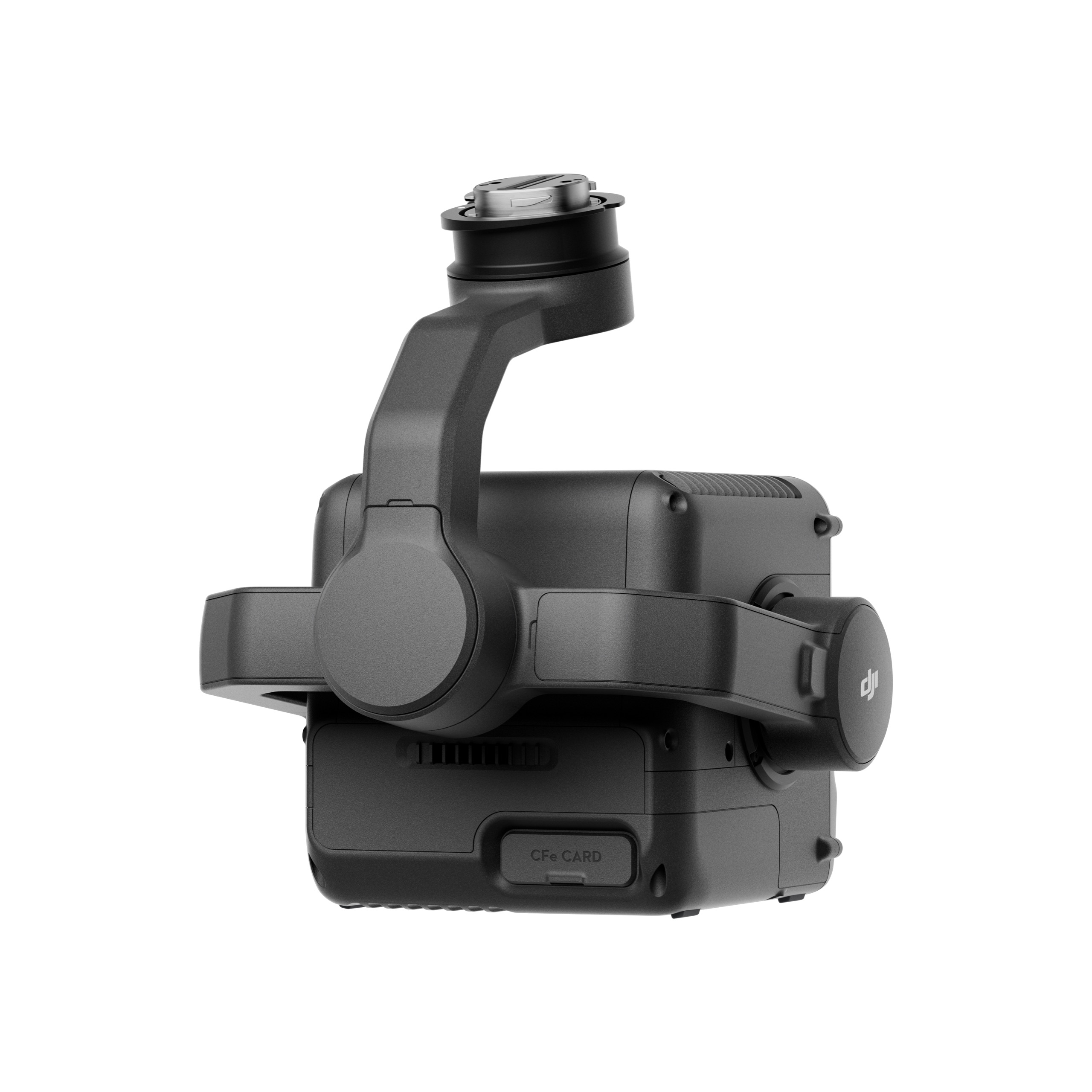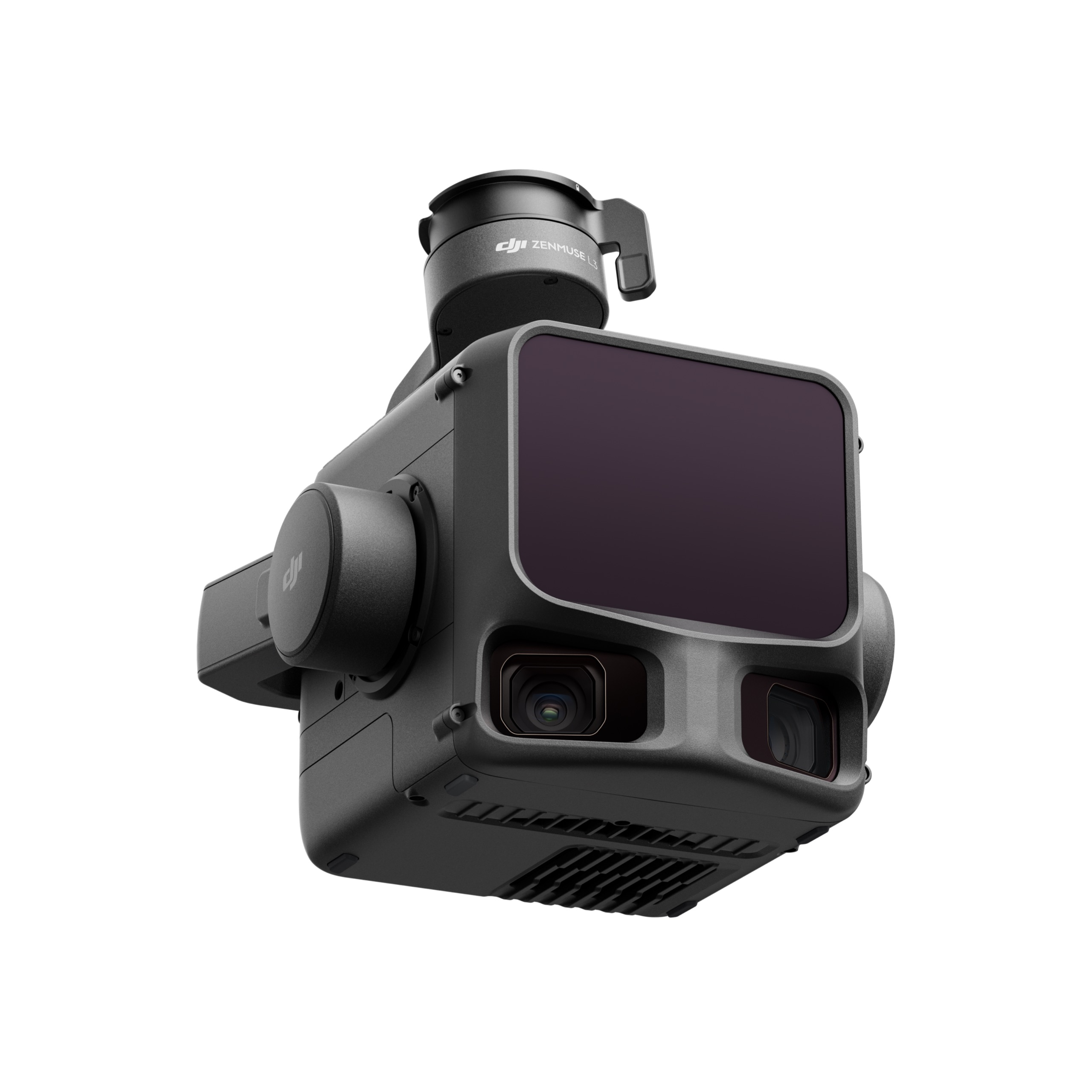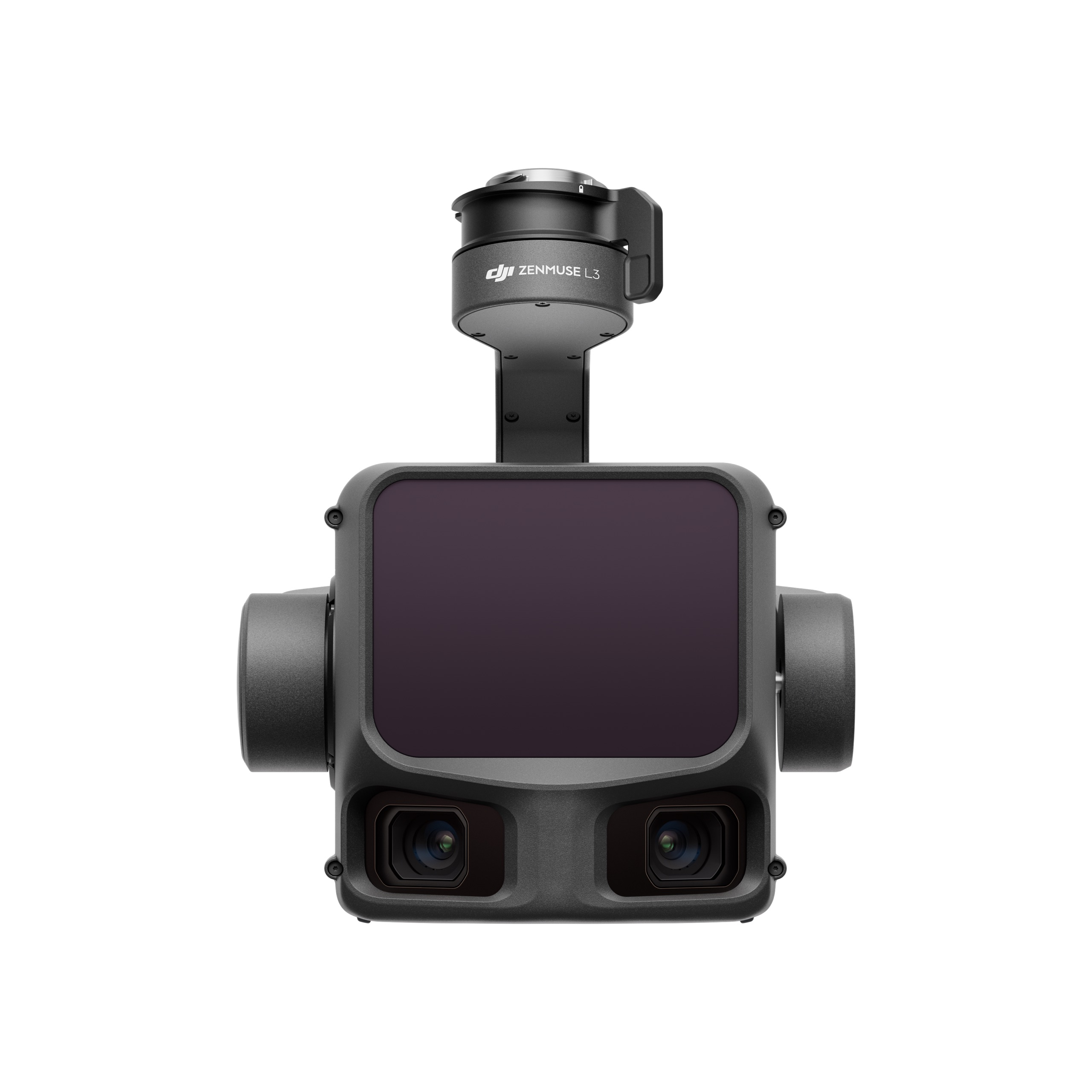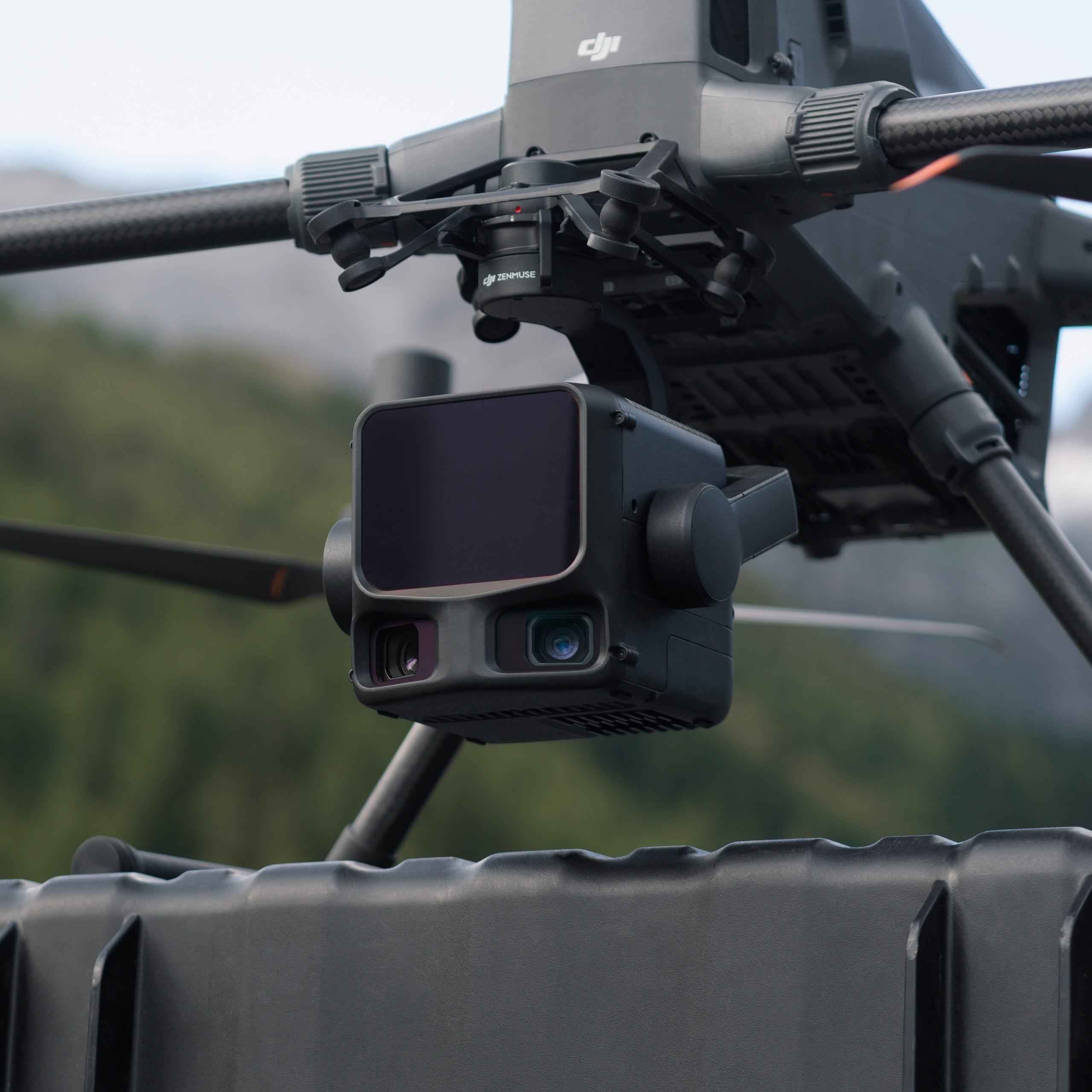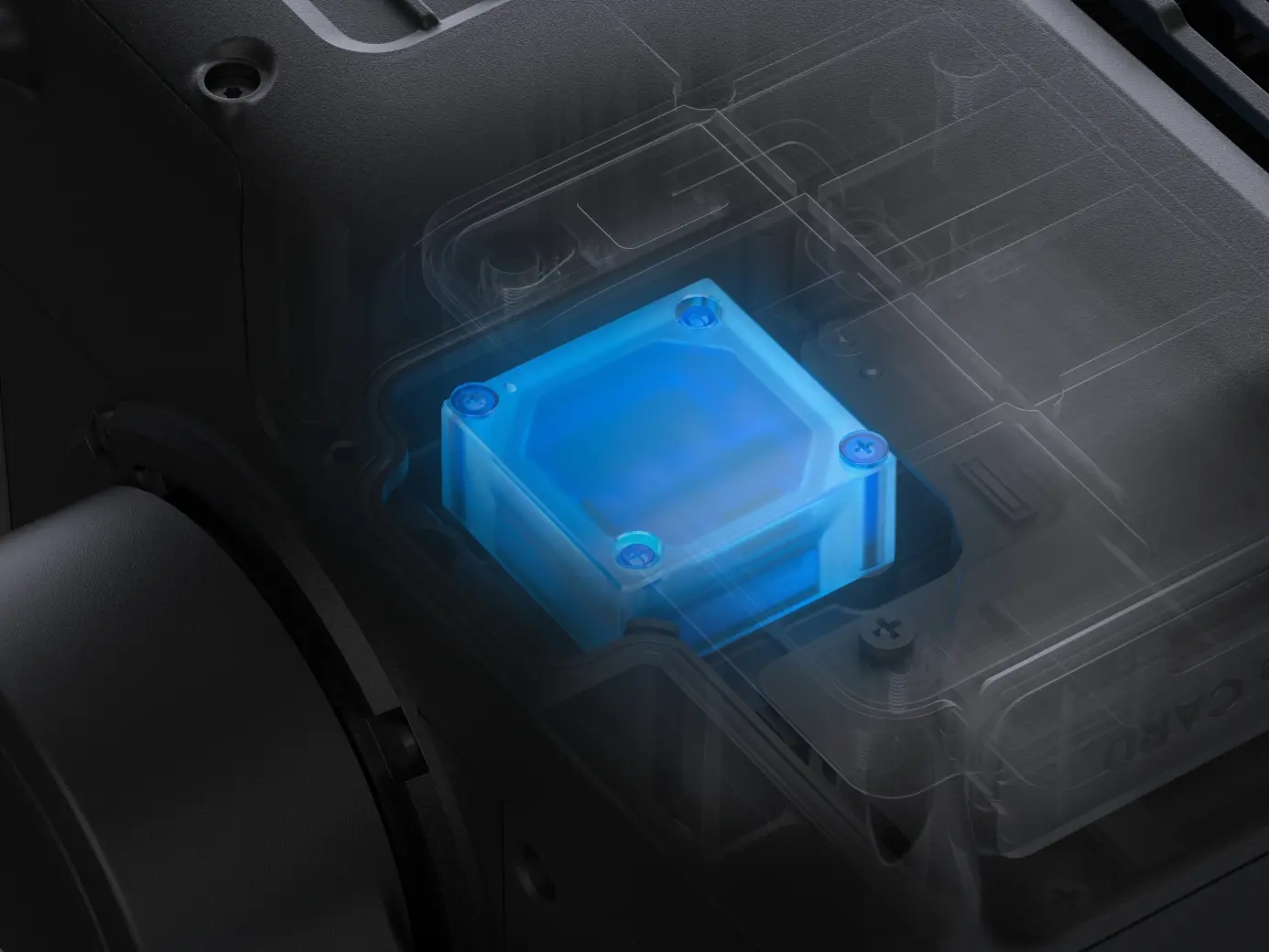Hardware Performance Redefined
Zenmuse L3 integrates a 1535nm long-range LiDAR, dual 100MP RGB mapping cameras, a high-precision POS system, and a three-axis gimbal, all within a compact device, delivering unprecedented performance for its size.
Accuracy Meets Efficiency
Zenmuse L3 delivers significant improvements in both point cloud and RGB accuracy, while raising efficiency to new heights. Paired with DJI Matrice 400, a single flight can cover up to 10 km², enabling up to 100 km² of high-accuracy mapping per day [2]. Large-area, high-accuracy results are delivered in a seamless workflow.
End-To-End Solution
Zenmuse L3 seamlessly integrates with DJI's ecosystem to deliver an end-to-end mapping solution. From data acquisition and processing to application, this unified workflow is simpler to operate and easier to master than traditional multi-platform setups, helping users efficiently complete a wide range of mapping tasks.
1. a. Range Definition: The range is defined as the distance at which 50% of the emitted laser pulses are detected. If a laser beam hits more than one subject, the total laser transmitter power is split and the achievable range is reduced.
b. Test Conditions: 100 klx ambient light, within the central area of the FOV, using a flat subject with a size larger than the laser beam diameter, a perpendicular angle of incidence, and an atmospheric visibility of 23 km.
c. The maximum detection range is 900 m by default. For a longer range, contact DJI support or an authorized dealer.
2. When paired with DJI Matrice 400, Zenmuse L3 can achieve a daily mapping coverage of up to 100 km² (flat terrain, 300m nadir flight altitude, 20% side overlap, 17m/s flight speed, and a total effective flight time of 6 hours).
3. The flying altitude limit varies in different countries or regions. Make sure to fly at the altitudes outlined by local laws and regulations.
4. Support for 16 returns is limited to laser pulse emission frequency of 100 kHz and 350 kHz.
5. Tested at 150 m under ambient temperature of 25° C (77° F) and 80% object reflectivity. Actual results may vary depending on environmental and operational conditions. Data is provided for reference only.
6. Measured under the following conditions in a DJI laboratory environment:
a. The field contained objects with obvious angular features. DJI Matrice 400 was linked to a position-calibrated D-RTK 3 Multifunctional Station. The flight route was planned using DJI Pilot 2's Area Route (with Calibrate IMU enabled) with Linear scanning. The flight speed was set to 15 m/s, gimbal pitch to -90°, and each straight segment of the flight route was less than 3300 m.
b. Using exposed hard ground checkpoints that conformed to the diffuse reflection model.
c. DJI Terra was used for post-processing with Optimize Point Cloud Accuracy enabled.
7. For detailed calculation methods, refer to the user manual available on the Downloads page of the official DJI Zenmuse L3 webpage.
8. The service plans offered in different countries or regions may differ. For more information, please consult your local authorized dealer. Free Repairs: Get free repairs within the coverage scope and limit; Coverage for Your Whole Fleet: Shared coverage can be extended to other DJI Enterprise devices bound to DJI Care Enterprise Plus within the same time period (30 calendar days) after the first activation and binding; Free Shipping: Available in regions covered by DJI Care Enterprise. Users are responsible for additional costs including logistics and customs duties incurred beyond the scope of coverage. For specific coverage of components, refer to the After-Sales Service Policy under Support on the DJI official website.




